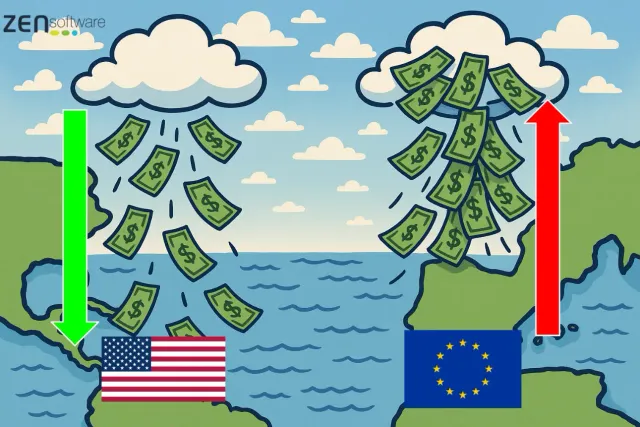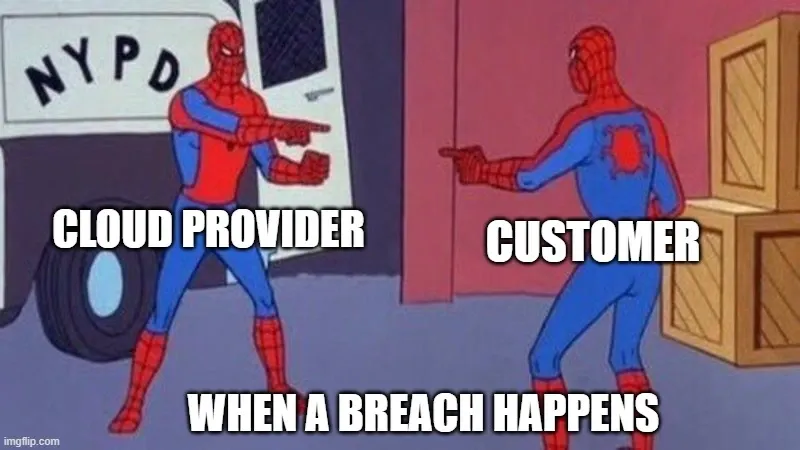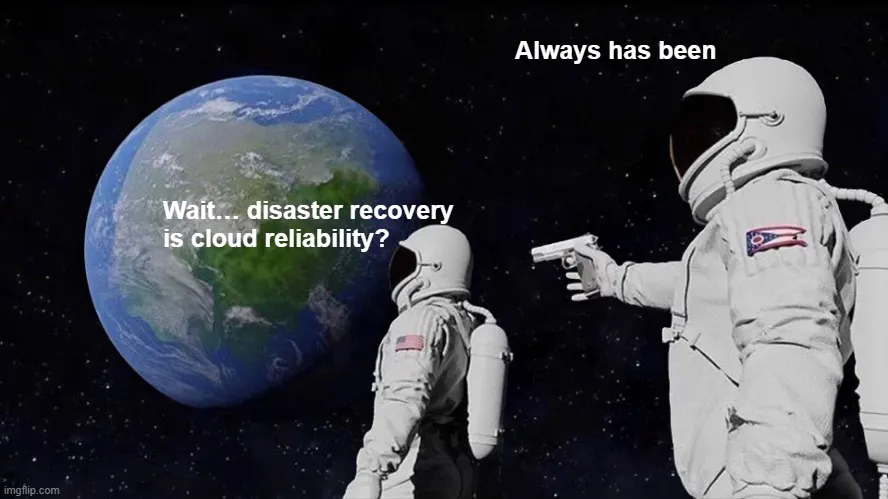OnlyCloud: Europe Pays, America Profits — Time for a Fairer Cloud Balance?

The Hidden Trade Imbalance in the Cloud Economy
📉 💸 When Donald Trump recently claimed: “Europe doesn’t buy anything American, not even cars,” he skipped an important truth. Europe does buy a lot from America — not in factories and hardware, but in digital services.
Cloud storage, streaming platforms, and SaaS subscriptions: almost all of them come from the US.
-
AWS, Microsoft Azure, Google Cloud control over 70% of the European cloud market.
-
Netflix and Disney+ dominate streaming, with only a few local challengers.
-
Software subscriptions — from Salesforce to Microsoft 365 to Adobe Creative Cloud — are practically unavoidable.
Europe consumes these services every single day, pouring billions of euros into the US economy. The money flows upward, into the cloud — and the cloud is firmly anchored on the American side.
Why Does This Matter for Europe?
On the surface, paying for cloud services is just global trade. But the imbalance creates structural vulnerabilities for Europe:
-
Digital Dependency
European businesses rely heavily on American cloud infrastructure. If US providers raise prices or restrict services, entire sectors in Europe would feel the impact immediately. -
Data Sovereignty Risks
Data stored in American clouds often falls under US jurisdiction (like the CLOUD Act), even if it physically sits in European data centers. This undermines Europe’s attempts to guarantee privacy and sovereignty. -
Economic Leakage
While Europe builds the physical infrastructure (fiber, local data centers, workforce), the profits flow abroad. Europe is left with costs, while shareholder value accumulates in Silicon Valley. -
Innovation Gap
With so many European developers and enterprises building on American platforms, local alternatives struggle to scale. This limits Europe’s ability to compete globally in the digital economy.
Why a “Cloud Tax” Isn’t the Answer
🧾 Some politicians argue for a European tax on US cloud and streaming services to “rebalance” the playing field. While this may sound attractive, the reality is more complex:
-
Higher costs for European businesses
A cloud tax would increase operating expenses for SMEs and startups that already struggle with slim margins. -
Reduced competitiveness
Extra costs would make European companies less competitive globally, compared to US or Asian rivals. -
Risk of retaliation
The US could respond with tariffs or other barriers, escalating into a digital trade war.
In short: taxation punishes European users more than it changes American business models.
Europe’s Path to Cloud Independence
Instead of penalties, Europe should focus on building a stronger, fairer digital ecosystem. Some promising directions:
Strengthen European Cloud Providers
Companies like OVHcloud, Deutsche Telekom, and Scaleway are already building alternatives, but they lack the scale of AWS or Azure. Europe needs to:
-
Support R&D through targeted funding.
-
Encourage enterprises to consider local providers.
-
Build alliances across borders to create true pan-European players.
Invest in Data Sovereignty
Projects like GAIA-X aim to create a federated, secure European data infrastructure. While progress has been slow, the concept remains vital: ensuring that European data is stored, processed, and governed by European rules.
Encourage Public–Private Collaboration
Governments, universities, and companies can pool resources to build scalable cloud platforms. Similar to how Airbus was created as a counterweight to Boeing, Europe could invest in a “Digital Airbus” for cloud.
Develop Open-Source Standards
Europe has a strong tradition in open-source software. By pushing for interoperability and open standards, Europe can reduce lock-in with US platforms and encourage local innovation.
The Bigger Picture: Cooperation vs. Confrontation
At the same time, it’s unrealistic to imagine a fully “European-only” cloud future. The global digital economy thrives on cooperation. Many of the innovations we rely on were co-developed across the Atlantic.
What’s needed is a balance:
-
Europe should reduce its overdependence on US providers.
-
The US and EU should continue working on fair rules for data flows and digital trade.
-
Joint innovation programs can ensure that both sides benefit.
This is not about decoupling. It’s about ensuring mutual benefit and resilience in a world where cloud infrastructure underpins everything from streaming movies to critical healthcare systems.
Conclusion: Europe’s Cloud Choice
Europe has two options:
-
Keep paying the bill while innovation, profits, and influence flow elsewhere.
-
Or invest strategically to become a real player in the cloud economy.
Complaining about being exploited won’t solve the imbalance. Nor will simplistic solutions like cloud taxes. What Europe needs is a long-term vision for digital sovereignty, paired with cooperation with trusted allies.
If we get it right, the cloud can be more than just a service we buy — it can be a platform we help shape. And that means a future where Europe not only pays, but also profits from the digital world it helped create.

Go Cloud Native, Go Big
Revolutionise your organisation by becoming a born-again cloud enterprise. Embrace the cloud and lead the future!
Read more:

What Cloud Looked Like in 2025 — Trends, Lessons & Future Proofing
By 2025, cloud computing had transformed beyond mere hosting: it became the foundation of AI, hybrid infrastructure, edg...

5 Signs You Need Cloud Consulting (Before It Costs You More)
Cloud adoption today isn’t optional — it’s a competitive accelerant. But here’s the truth: many teams quietly discover t...

How to Boost Your Google Cloud Skills: A Practical Growth Guide for Modern Engineers
The cloud is no longer just infrastructure — it’s a core capability for modern engineering teams. Whether you’re a softw...

Lessons from the Cloudflare Outage: Building Resilient Cloud Architectures
On November 18 2025, Cloudflare, a major content-delivery and internet-infrastructure provider handling roughly 1 in 5 w...

Shared Responsibility, Shared Confusion: Who Owns Security in the Cloud?
When companies move to the cloud, they often assume that the provider — whether AWS, Azure, or Google Cloud — takes care...

Disaster Recovery in the Age of Remote Work
The way we work has changed dramatically. Remote and hybrid models have shifted software development and IT operations f...
